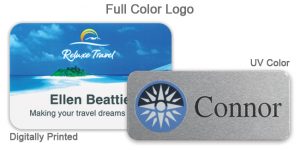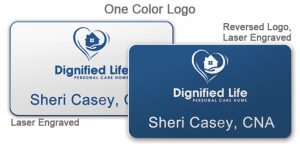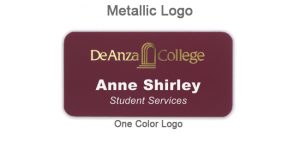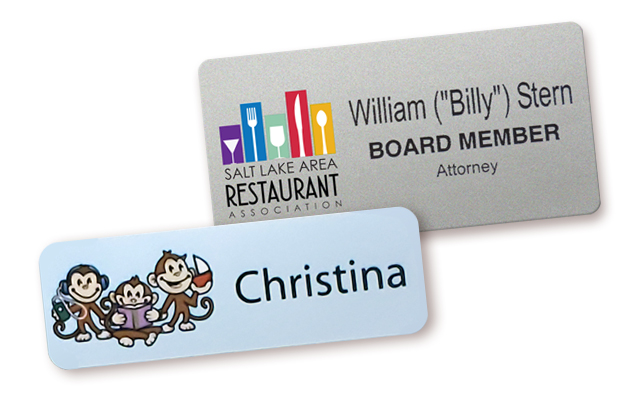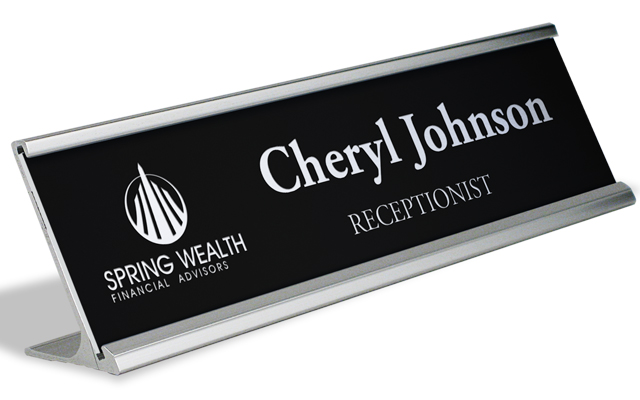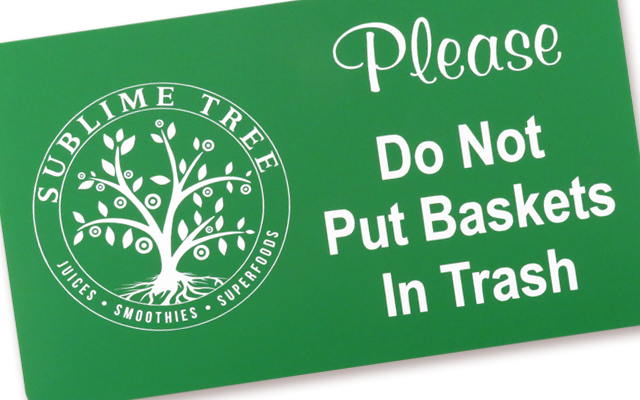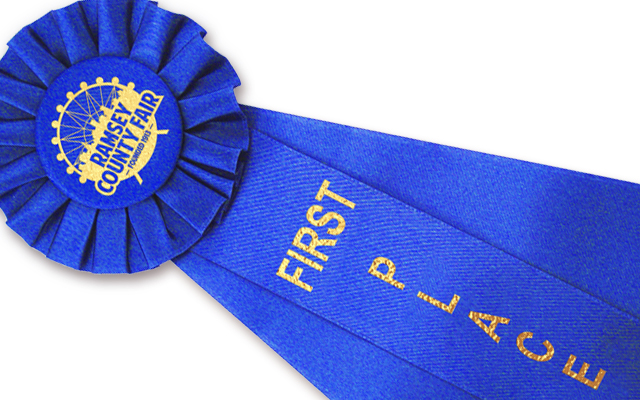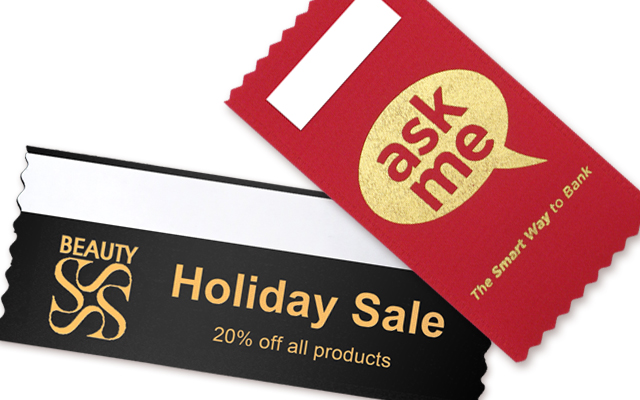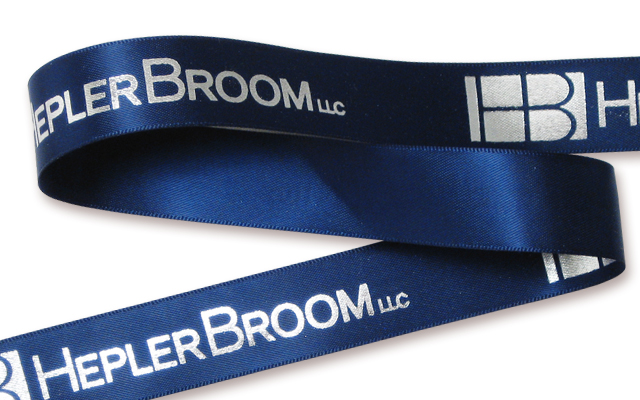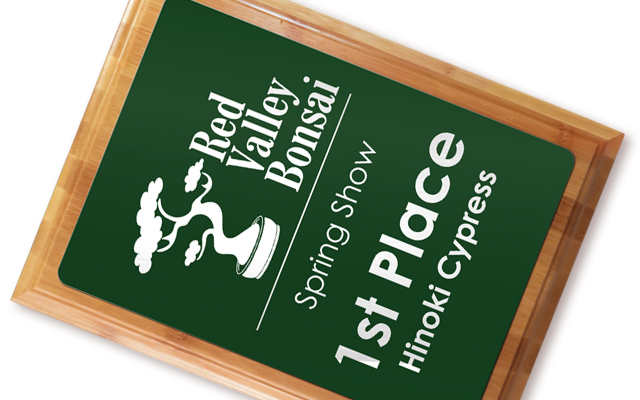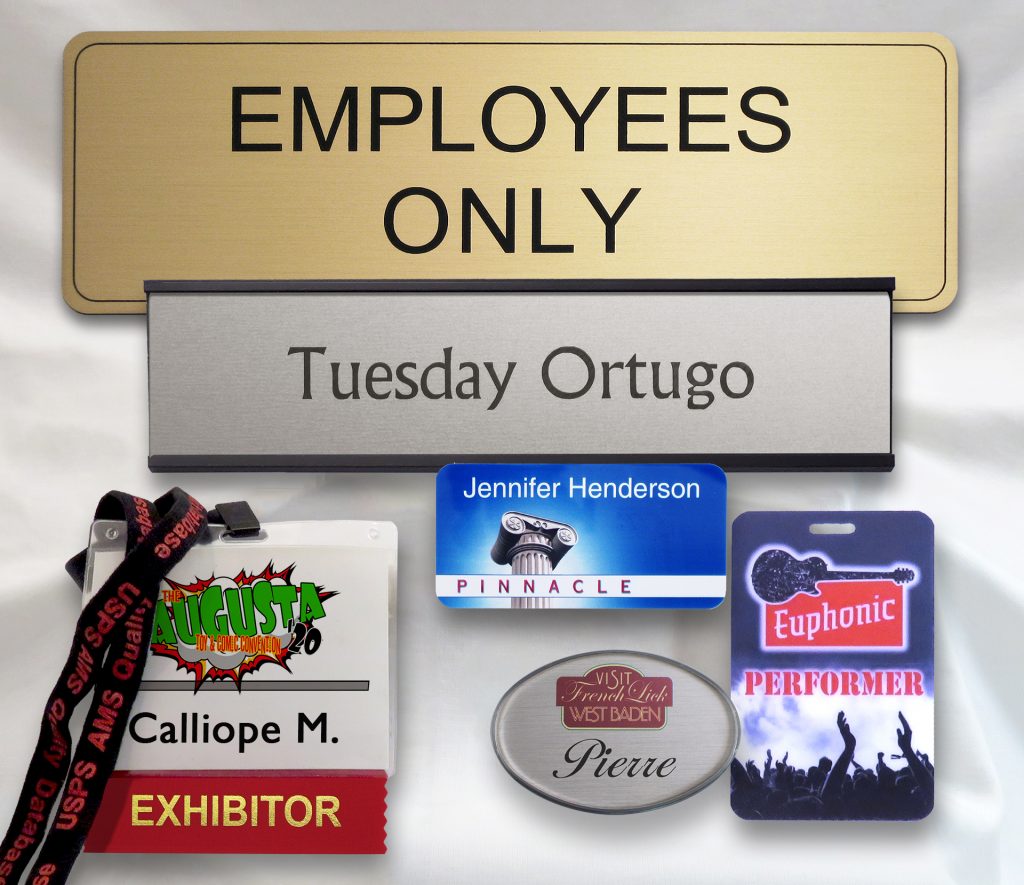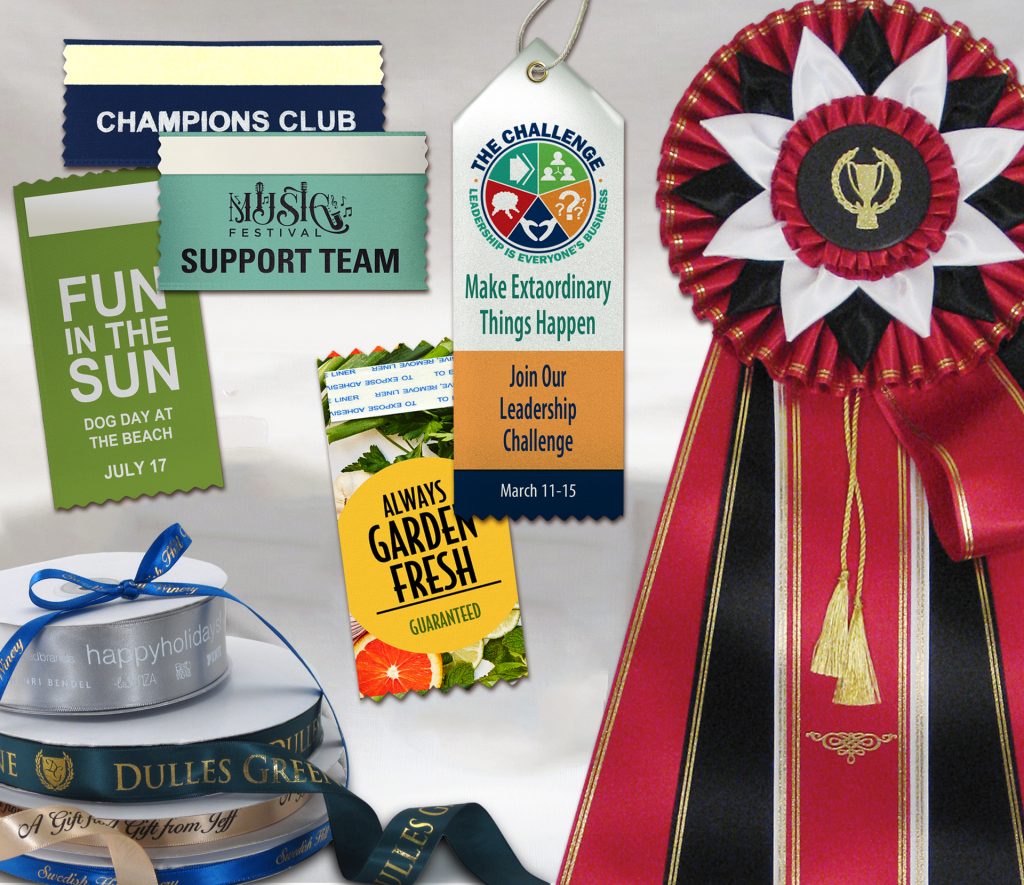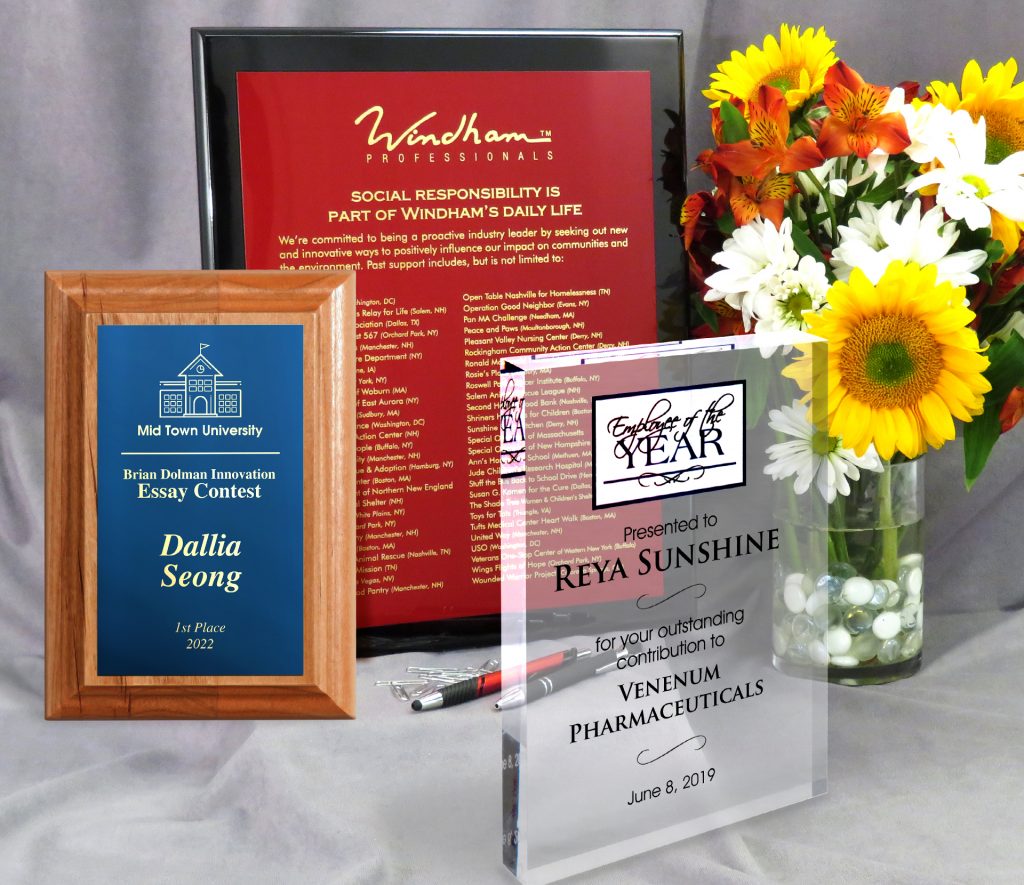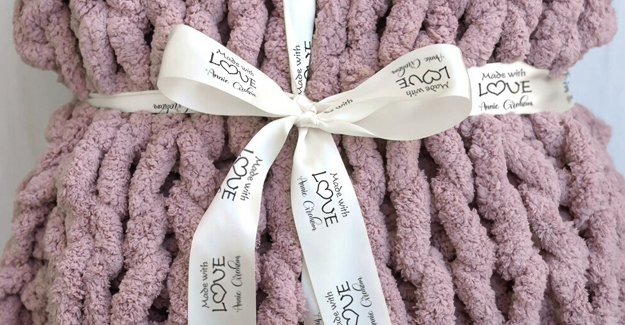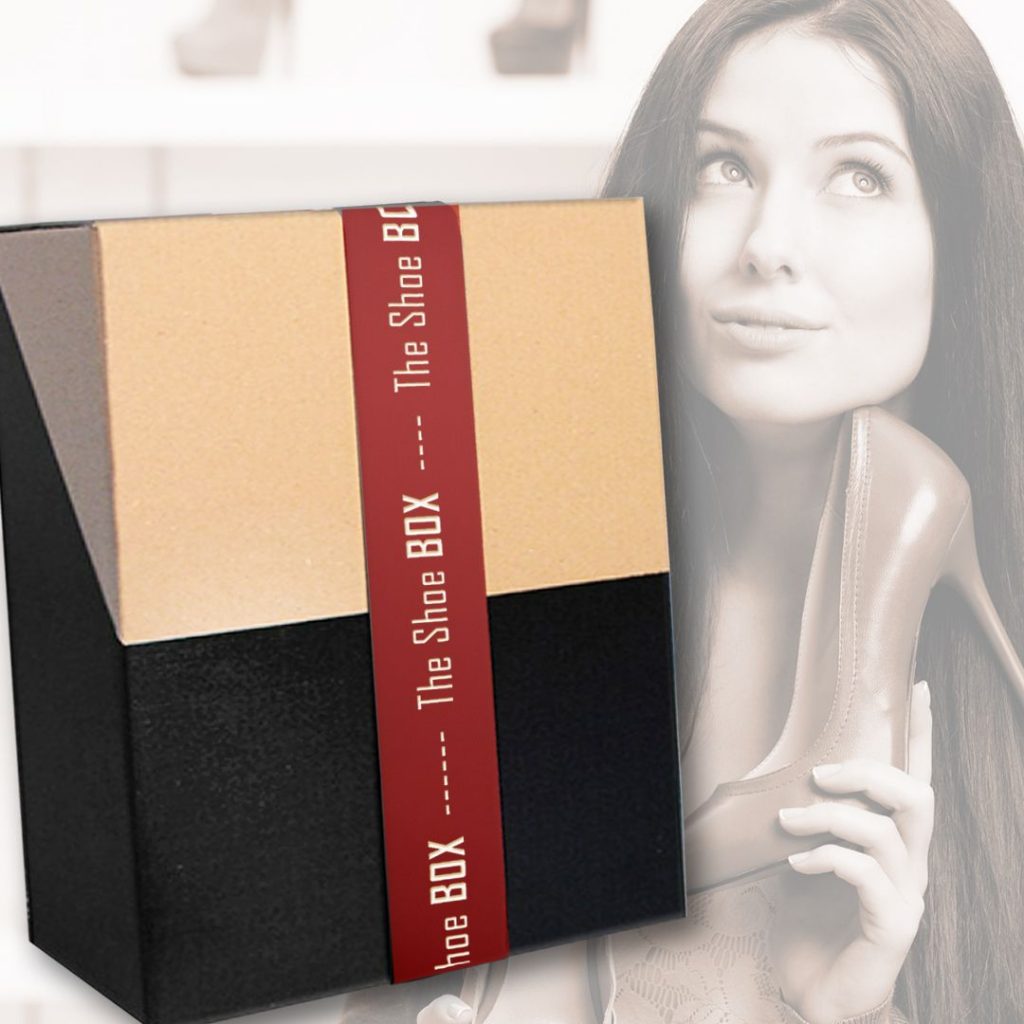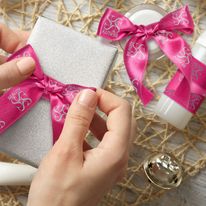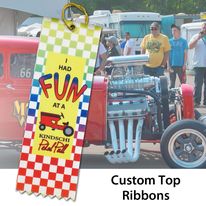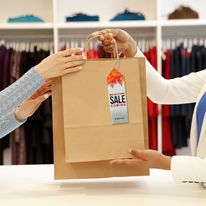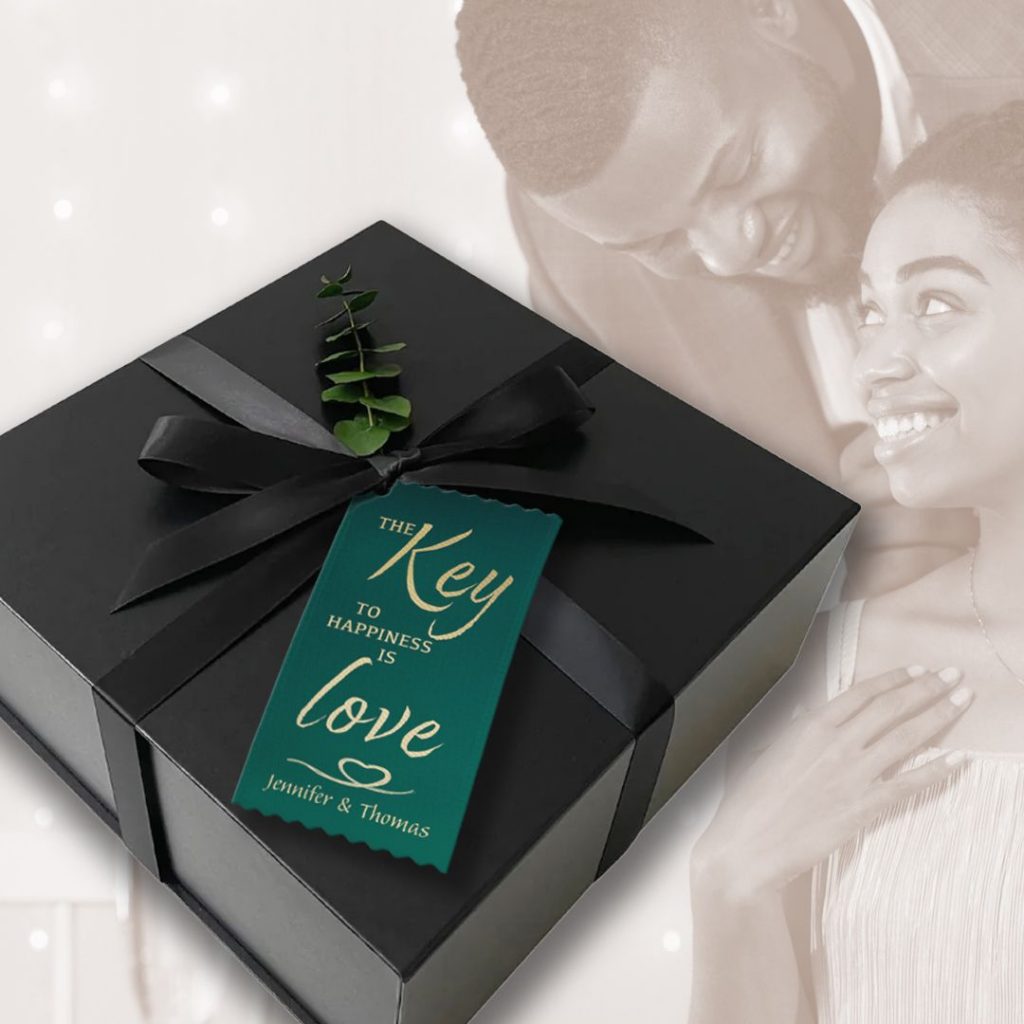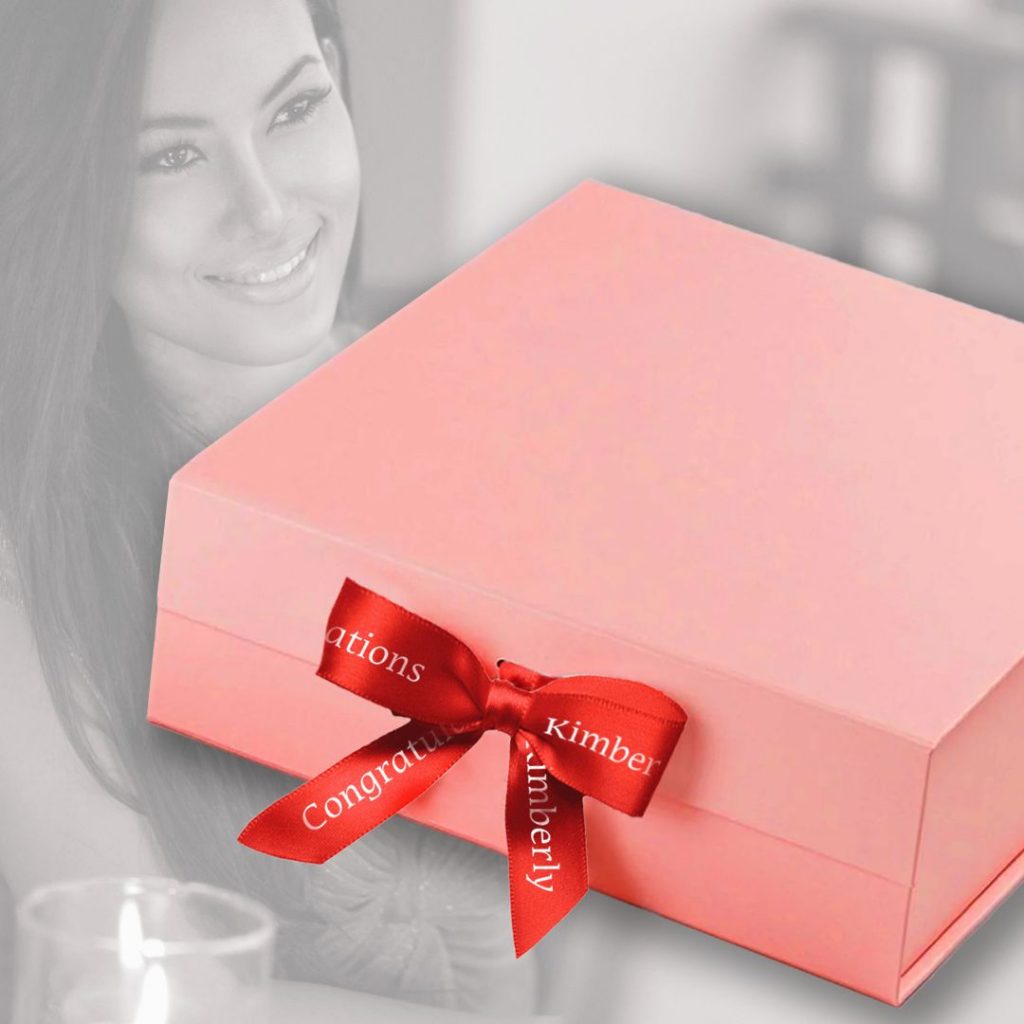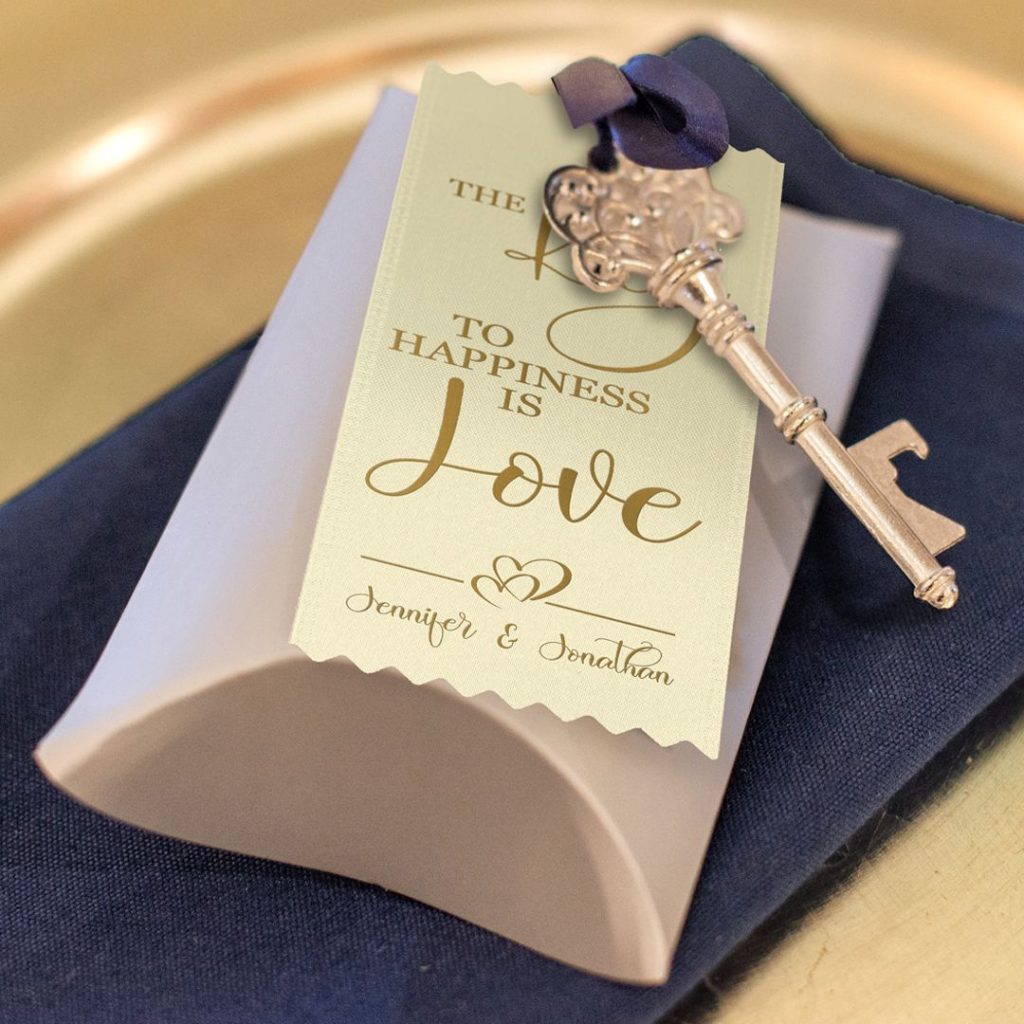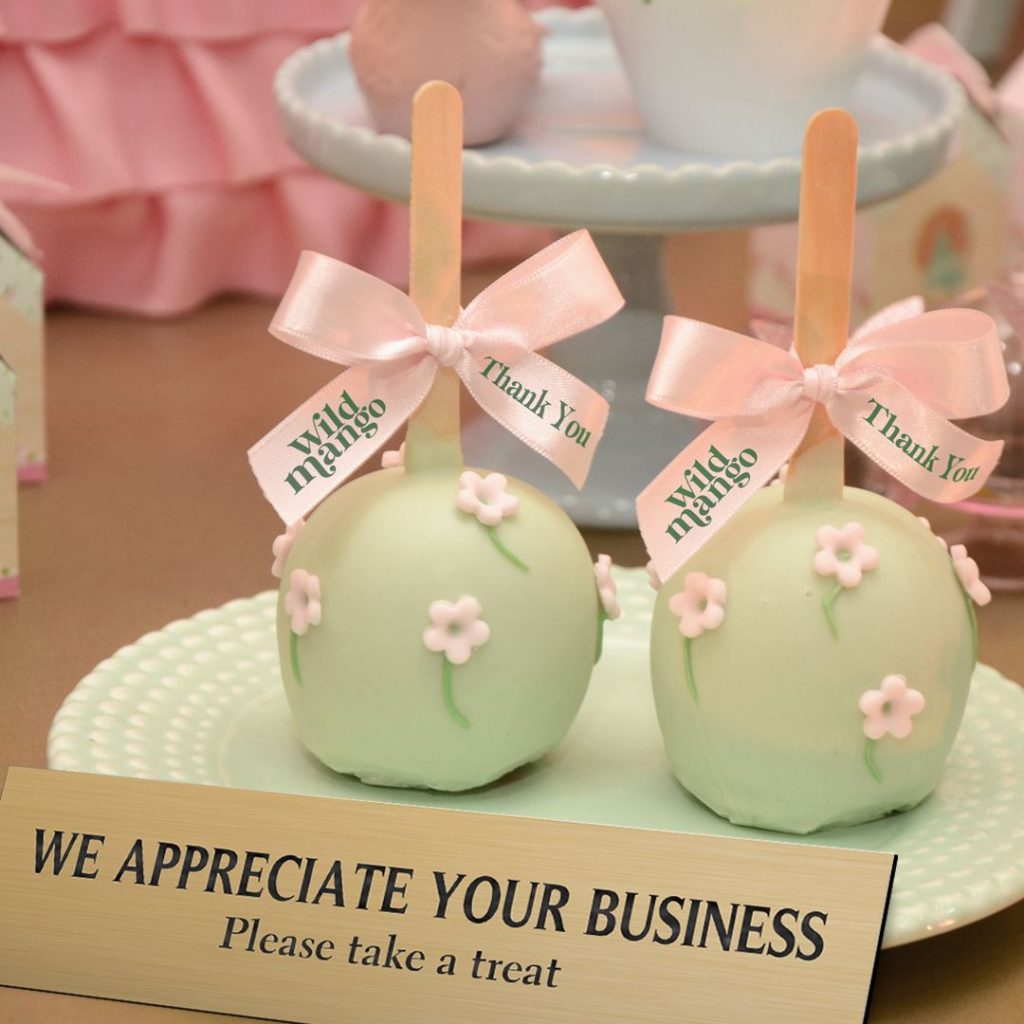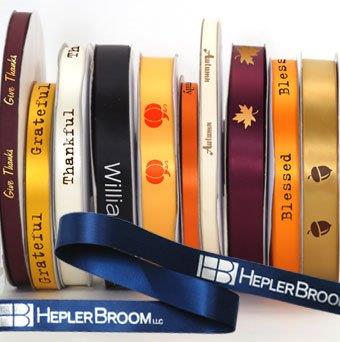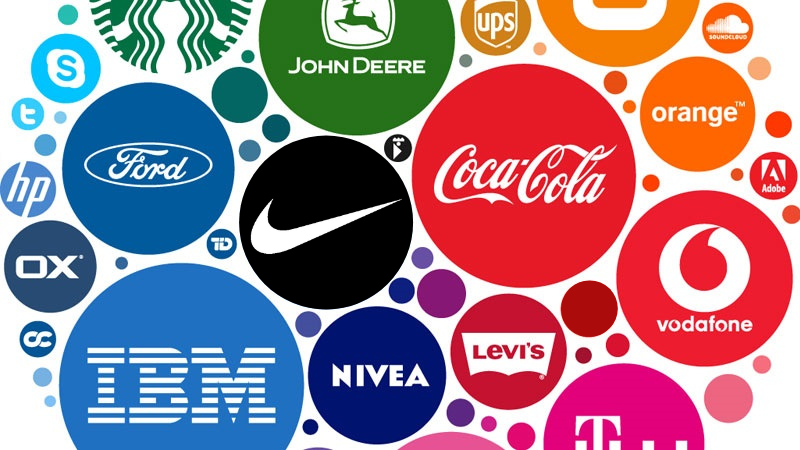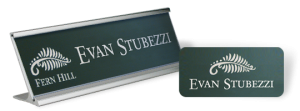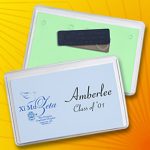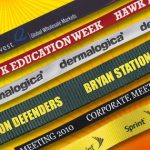Owning a business means that you have worked hard to get recognition through your branding. Part of this branding is your company logo, and this magnificent marketing tool is one of the oldest forms of visual communication. But, have you considered how to correctly add your logo to identification (name tags, lanyards, signs, ribbons, etc.)?
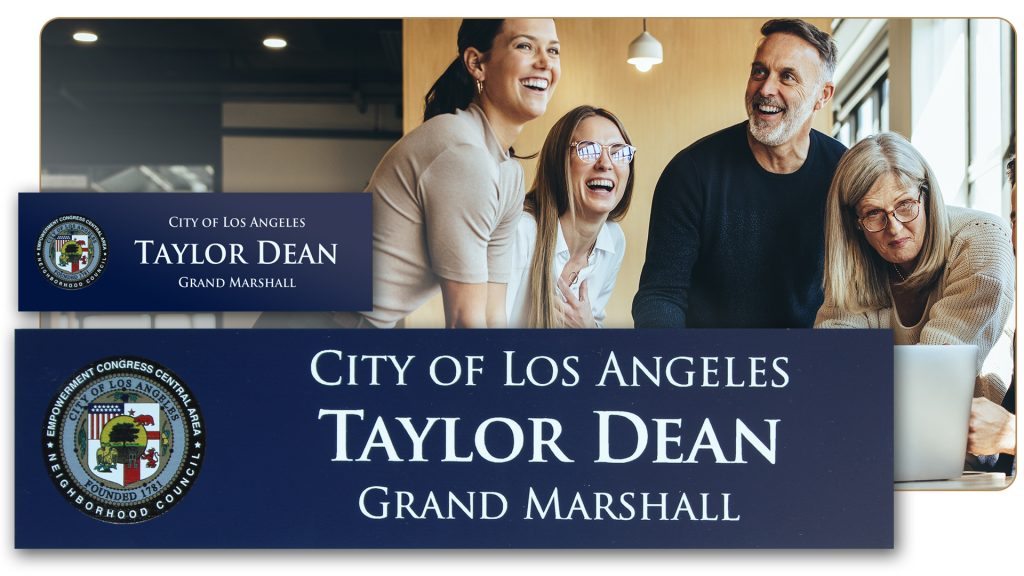
A great business logo should imprint in the minds of your clients, customers or audience using text, icons and graphic elements, such as color or shapes. As author Robin Landa says, “A logo is the single graphic design application that will be a part of every other brand design application [for your business].”
When you look around, you instantly see logos everywhere, from the pen you write with to the car you drive and even letters you receive in the mail. This is because businesses know that as you see these logos, they instantly remind you of their brand, even if you throw them in the trash. You can see the same thing with your logo and identification products.
Brand vs. Logo
Brand = a product or service that has a unique and immediately recognizable identity that distinguishes itself from others in its industry.
A company’s brand is what they are, what they want to be, and what they aim to become. It can be a promise of quality, trust or service. A brand is what makes a company or organization truly unique.
Logo = a symbol or other design adopted by an organization to identify its products, uniforms, vehicles, etc.
Your logo represents you, your company, your brand and your overall commitment to your clients and customers. And creating consistency by adding your logo to everything you personalize (from name tags to corporate gifts) lets people know you’re proud of what you stand for.
Let’s talk your logo and identification: types, processes and files
Creating a positive influence with your brand means guaranteeing that your business’s services and products are consistent. From branding to color matching, name tags help symbolize your quality. So make sure you are adding your logo to identification products which reflect your commitment to quality.
We use several methods to add your logo to our name tags, name plates, ribbons and signs. Understanding these processes will help you decide which product best suits your business. It will also help you know where your logo placement should be.
Type 1) Full Color
When your logo has more than one color, it is considered full color. The colors may be light or dark, bright or pastel, in solid blocks or with gradients and blending. These logos are often seen on websites, company stationery, business cards and marketing materials.
Let’s get technical (processes):
- Digitally Printed: Only available on thinner plastic; this process allows us to print full color, bleeds and even gradients.
- UV Color: Available on plastic and metal, this process provides a unique, tactile feel to full color graphics.
Type 2) Single Color
A logo that has a single color can be engraved on any laser material. The material your choose for engraving will define the background color as well as the engraved color. It is also possible to print single color logos, which will allow your logo and the engraved text to be different colors.
Reversed: An all white logo can be a great option for printing on dark backgrounds. It creates a strong contrast, making it stand out on black, navy, dark brown, and other dark colored backgrounds. Additionally, all white logos are particularly suitable for laser engraving on dark materials.
Let’s get technical (processes):
- Laser Engraved: Plastic and metal, engraved text and logos resulting in a two color name tag.
- UV Printed: Plastic tags have printed logos with engraved text; the text color is based on the material selected. Metal tags have engraved logos and text is printed in black.
Type 3) Metallic
Some logos, in order to maintain the proper brand representation, need to have a spark of metallic foil. This process helps to create uniqueness in a brand and image. Hot stamping is a method used to transfer foils to the plastic surface at high temperatures. Though the available colors for stamping are limited, the results can be stunning.
Let’s get technical (processes):
- Available on plastic only
- Gold, silver and copper metallic foils
Logos need to be saved in one of two formats
We require high quality artwork for all processes when adding your logo to identification. Our design team reviews your artwork before production, and will make adjustments if necessary. We require that you send your artwork in one of the two options below.
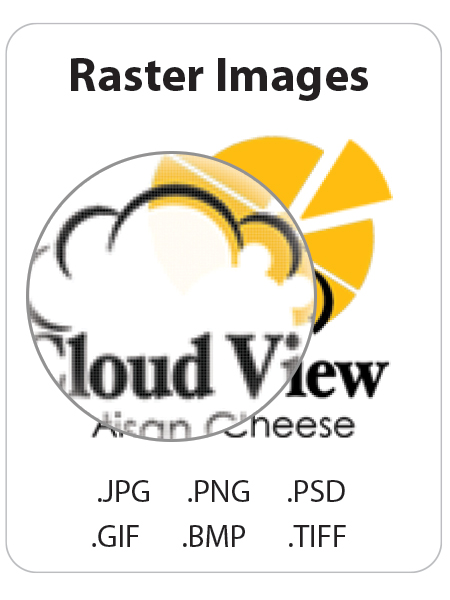
Raster Artwork
These files include extensions jpg and png. Raster images are made up of pixels locked into the image. When enlarging the picture, you can even see the individual pixels. This image type is commonly used in photography and as default images in software design programs like Photoshop and Canva. As long as the image is set up with high quality, they may be able to be printed using UV color and digital logos.
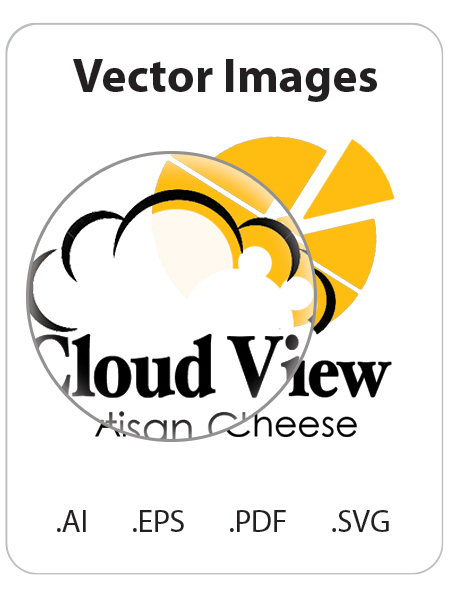
Vector Artwork
These files include extensions: eps, ai, cdr. Unlike pixels, vector images do not face scaling issues. Instead, they use math equations to retain their original dimensions. Therefore, they are ideal for printing your logo. Illustrator is the main program that can be used to create a vector file for any printing process.
Additional resources about your logo and identification:
Branding, from recognition to awareness, is the best way your business can grow while increasing your customer base. Therefore, making your products or services consistent with your company image is important as you strive to reach your business goals.
When using a logo in this process, you make sure that current and potential customers think of your company when they need your product. As part of this, businesses often create various versions of their logo to retain flexibility in different uses. It is important to consider these logo versions when purchasing identification like name tags.
You can add a logo to many of our name tags and other personalized products. Name tags, name plates and signs are laser engraved or printed with your logo, company name and an employee’s name. Reusable name badges and badge holders come with printable inserts where you can add your logo using your office printer. Even order custom lanyards and ribbons with a logo to promote your company or organization at your next event.
Source: Company Branding with Name Tags
So, why should you add your business logo to your personalized products? Adding your logo to your products can be a powerful way to increase brand recognition. Every time someone sees your logo, it will remind them of your company and the product or service you provide.
Printing your logo on identification: How to avoid problems and fix potential issues
As you consider ordering name tags and other products with your logo on them, keep specific questions in mind. By carefully considering these factors, you can ensure that your logo products will effectively promote your brand and leave a lasting impression on your customers.
- Which colors are represented in your logo?
- Will they work better on a light or dark surface?
- How will your logo look on your chosen material?
- How complex is your logo (details and colors)?
- Do you have a proper file, or will it need adjustments?
Your Logo and Identification: COLORS & CONTRAST
For most products, contrast between the logo and the material is essential. Lighter colors will stand out on dark materials, while darker colors will have more contrast on light materials.

For example, a dark blue logo placed on black material will not show well. However, if the logo colors are adjusted to increase contrast, they will stand out and help customers see the branding. Likewise, adding a logo with black in it to black material, whether metal or plastic, will make the logo practically invisible. By changing the material color to white, the logo can pop and stand out for everyone to see.
Adding contrast to the design of your personalized product is critical to helping your logo be seen. Think about how all the colors will work together, and consider whether your choices will be visible. Ask yourself if they portray your brand messaging accurately. The table below offers suggestions of how the material color and the logo and text colors work together.
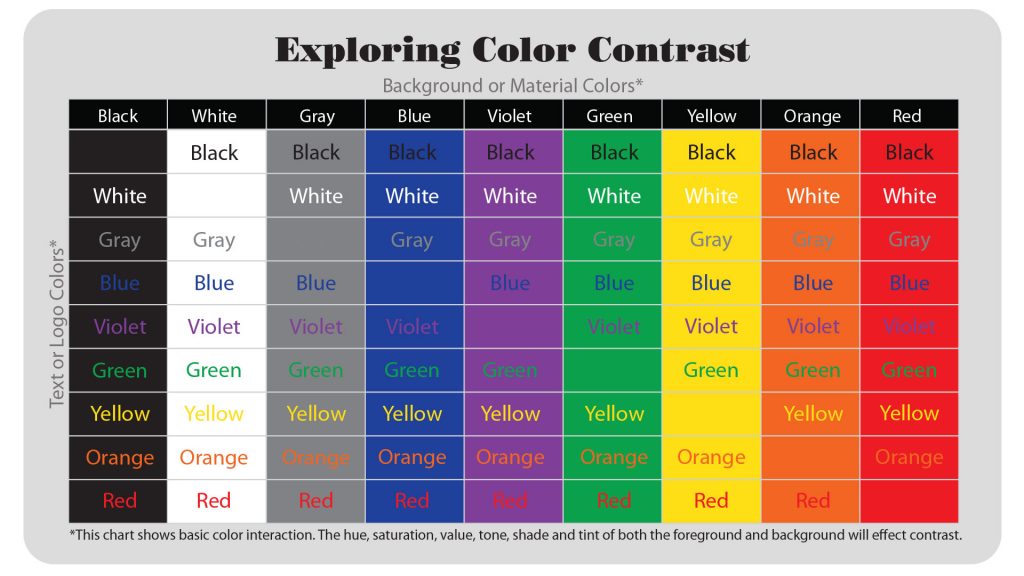
Your Logo and Identification: COMPLEXITY
Another thing to consider is how complex your logo is. Take into consideration the number of small details and text. Then, think about how important this information is and how visible it needs to be. Remember that when adding a logo to name tags, the visibility will not be as good as adding the same logo to a sign.
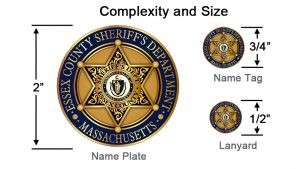
The size of the logo becomes an important consideration when it is complex. Printing or engraving a logo may be restricted by the product to which you add it. On a lanyard, the logo will likely be less than 1/2 inch in height; for name tags, less than 3/4 inch in size; two inches on a name plate; and on an award plaque or sign, the logo can be larger.
Color printing processes are a bit better at capturing smaller details in a logo than engraving, although the colors may become muddy, causing problems with contrast. Small details may be lost as the size of a logo decreases, especially when using a laser to burn out the image. Adding elements, such as names and titles, limits the space available for logos. However, if you add a company name, you can provide information that may be lost by making a logo smaller.

5 Design Principles for Logo Usage
Size – A logo’s final size makes a difference. The more detail a logo has, the more difficult it becomes to see at smaller sizes, so a logo that looks great on a name plate may not work as well on a name tag.
Color – Carefully think about the color of your logo and the color of the name tag. If your logo has bright colors, it will not make as much of a statement on an engraved two color tag, but it will look stunning as a UV color printed on plastic or metal or even as a full color plastic tag.
Contrast – No matter where you have your logo, you want to make sure it is highly visible. So, consider the contrast between colors as you choose materials and printing/engraving style. For example, as shown below, pastels on silver can wash out, and on the name plate and tag above, the blues in the logo blend with the chosen material.
Orientation – The shape and orientation of your logo make a difference in where to place it on your product. The horizontal logo on this example works well when placed at the top of the name tag. However, when placed on the right side, it shrinks to a size that isn’t visible. A good rule is that a horizontal logo is best on the top or bottom of your tag design, while a vertical logo is best on the right or left.
Product – Artwork requirements for logos vary by product. For example, a single color vector file is required for some products, while a high quality vector file is needed for full color products. Individual order pages will let you know which requirements are required for each product.
One last thought: trust your designer
You will receive an email with a proof for all custom products showing you how your product will look. It is important to be aware that the colors and contrast you see on a screen will always be different than the final product. The main difference between “on screen” and “in print” images is the lighting.
Every digital monitor contains a light which shines through pixels. This back lighting helps your image to appear brighter and more detailed. The screen also allows you to zoom in and see the product at a larger than life size. So please trust our design team who has worked with thousands of logos and will catch most problems before they go to production.
Why logos matter more than you think
A logo is more than just a simple symbol. It is the visual representation of your company and what it stands for. Your logo is an important piece of your company’s identity. Are you looking to take your business to the next level? Add your logo (to name tags, of course)!
Your logo is a customer’s first impression of your business and is how people will recognize and remember you. So, create a logo that matches your business’ values and purpose. A well designed logo is a mark of a well run company. Consistency is critical to your brand identity, so you want your logo to match wherever you use it, as it is the essence of everything for your business.
It is important to make sure that you provide the best possible representation by carefully considering how people perceive your logo on your personal identification, signs and marketing materials. Details such as colors and typography are essential, as you want them to match the rest of your brand’s identity.
Key points (tl;dr 🤷♂️):
- Every business should have a logo that represents their identity.
- Colors and contrast between your logo and material choice matters.
- Design your logo to meet your identification needs.
- Know what makes your logo look great, i.e., colors and complexity.
- Provide the proper file type of your logo for the best printing results.
About Coller Industries Incorporated
We are your name tag experts! Amazing customer service and high quality products are what makes us your number one source for all of your identification needs.
Founded as Name Tag, Inc. in 1995, Clyde Coller started the engraving business as a part time retirement business in his basement. After growing big enough to handle more than just name tags, the company rebranded in 2009 as Coller Industries Incorporated to be more inclusive of the diversity of our product line.
Although we have grown rapidly, our focus and mission has and always will remain the same: TO SERVE OUR CUSTOMERS. We accomplish this mission by providing fast, friendly service and guaranteed high quality products.
As your name tag experts, we can add your logo to nearly any identification product you need.
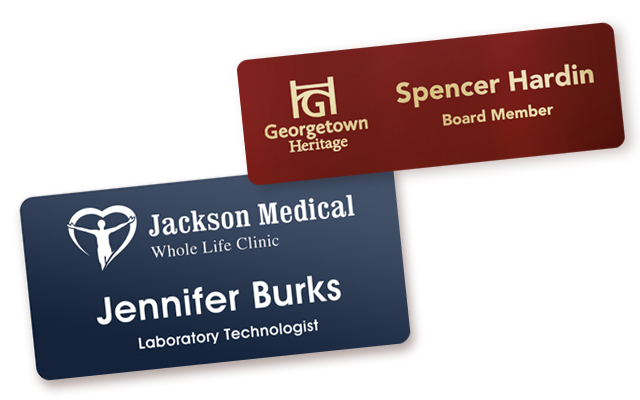
(engraved)
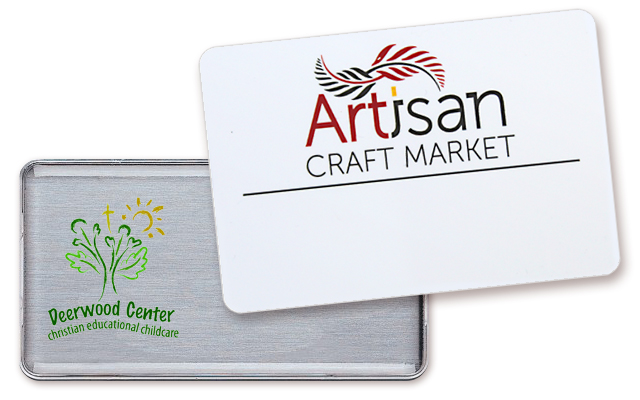
(engraved or full color)
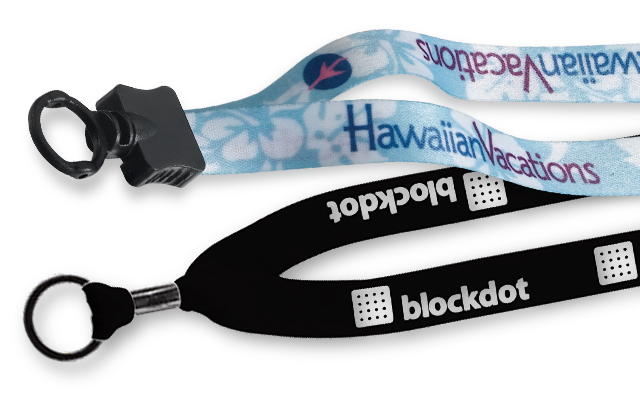
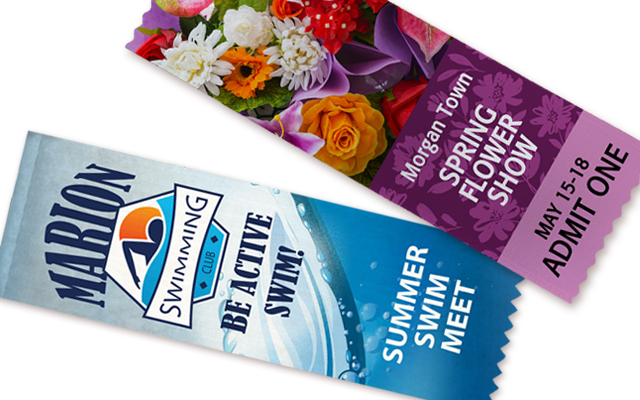
(full color)
As the parent company of Name Tag, Inc. and Personalized Ribbons, we provide you with a wide selection of name tags, ribbons, lanyards, award plaques and more. Enjoy the highest quality products using our fast and easy ordering process. Whether you order online, over the phone or via email, our friendly customer service representatives are ready to assist you.

